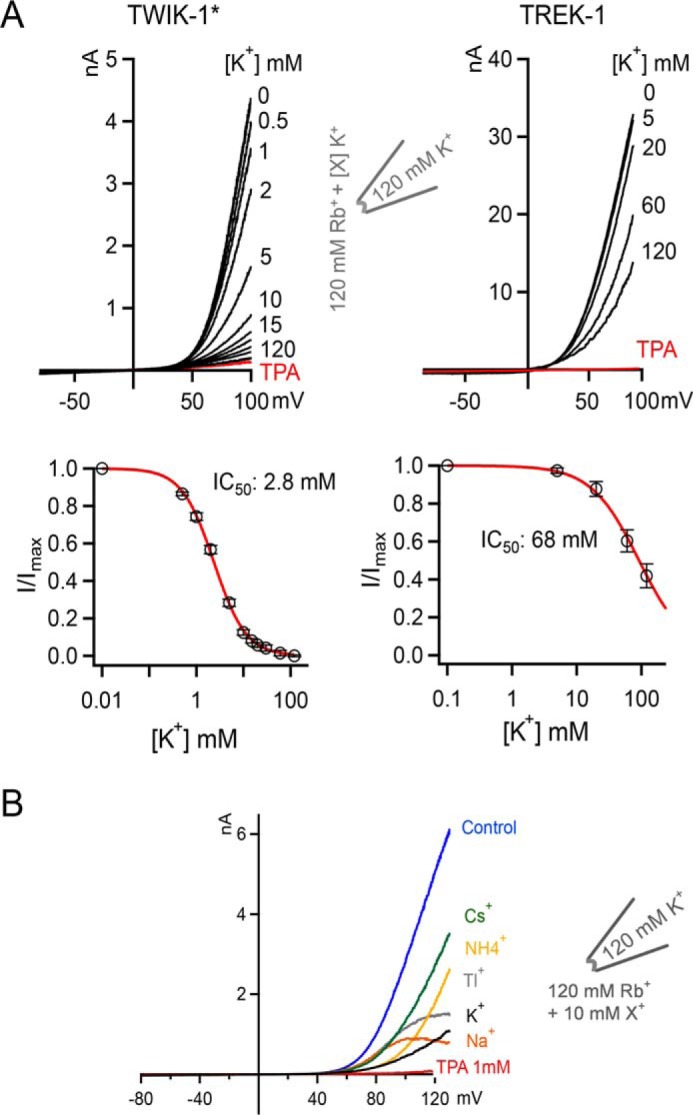Figure 4.

High-affinity inhibition of TWIK-1* Rb+ currents by intracellular K+. A, comparison of K+ inhibition of Rb+ currents in TWIK-1* and TREK-1. Top panels, in both cases, the intracellular concentration of Rb+ is kept constant at 120 mm, and increasing concentrations of K+ are added. Currents were recorded in response to a voltage ramp from −80 to +100 mV. In all cases, these currents can be blocked by intracellular application of 1 mm TPA (example shown in red). Bottom panels, TWIK-1* and TREK-1 currents from the experiments in the top panels are plotted against intracellular K+ concentrations. B, comparison of the inhibitory effect of different monovalent cations on TWIK-1* Rb+ currents. Currents were elicited in response to voltage ramps from −80 to + 120 mV. K+ is the most potent inhibitory ion within the physiological voltage range. Note that Cs+, which usually acts as a permeant blocker of most K+ channels, has the least inhibitory effect.
